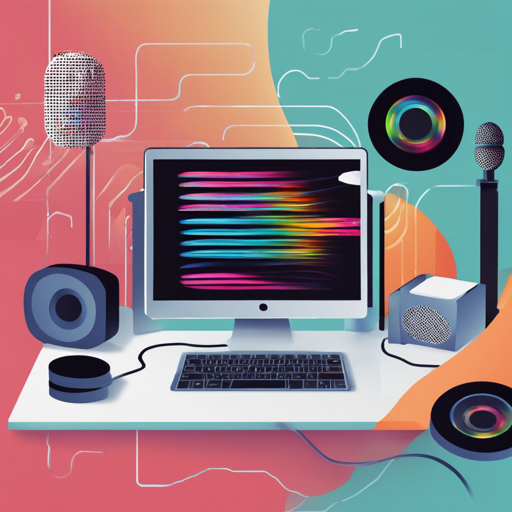Ready to dive into the world of voice technology? VoiceStreamAI is your go-to solution for near-real-time audio streaming and transcription, utilizing WebSocket for flawless communication. In this guide, we will walk you through the setup process and provide insights into troubleshooting common issues. So, let’s get started!
What is VoiceStreamAI?
VoiceStreamAI is a hybrid solution made with a Python 3 server and a JavaScript client that accommodates live audio streaming and transcription. Powered by cutting-edge tools like Hugging Face’s Voice Activity Detection (VAD) and OpenAI’s Whisper transcription model, this platform ensures high accuracy in recognizing speech. With the orchestration of various components, it’s like having a versatile orchestra playing in perfect harmony – where each musician (or component) plays their part perfectly to create beautiful music (or accurate transcription)!
Getting Started with VoiceStreamAI
Prerequisites
- Python 3.8 or later
- A modern web browser with JavaScript support
- Basic knowledge of Docker (if using Docker for installation)
Installation Steps
Choose your installation method:
- Using Docker:
- Follow the Linux-specific commands to set up Docker with NVIDIA support.
- Run the command to build the container image:
- Create a Docker volume to store Hugging Face models permanently:
- Run the Docker container with the necessary environment variables:
- Normal, Manual Installation:
- Install the required Python packages:
sudo docker build -t voicestreamai .sudo docker volume create huggingface_modelssudo docker run --gpus all -p 8765:8765 -v huggingface_models:root.cachehuggingface -e PYANNOTE_AUTH_TOKEN=VAD_TOKEN_HERE voicestreamaipip install -r requirements.txtConfiguration and Usage
Once the installation is complete, configure the server:
- Customize your server with command line arguments for VAD, ASR settings, host, and port preferences.
- Run the server using the command:
python3 -m src.main --vad-args auth_token: VAD_TOKEN_HEREFor the client, simply open the client/index.html file in your web browser and connect to your local server.
Understanding the Code with an Analogy
Imagine setting up a restaurant where you serve a variety of dishes. Each dish represents a different audio processing strategy – some are quick to prepare while others require more time. Similarly, VoiceStreamAI separates the restaurant floor (client) from the kitchen (server) using WebSockets, where the servers (managers) communicate orders (audio streams) directly to the chefs (processing components) who handle the ingredients (audio segments). By classifying and processing only the voice meals while discarding non-speech “ingredients,” the restaurant ensures smooth operations and satisfied customers (accurate transcription)!
Troubleshooting
If you encounter issues, consider the following troubleshooting ideas:
- Ensure the Docker environment is properly set up and your GPU is recognized.
- Double-check that you have the correct VAD token and it is placed correctly.
- Verify that the WebSocket server is running and accessible from your client.
- Review the console for any JavaScript errors that may indicate client-side problems.
For more insights, updates, or to collaborate on AI development projects, stay connected with fxis.ai.
Final Thoughts
By using VoiceStreamAI, you harness the power of real-time transcription, which can be pivotal in many applications ranging from customer service to live captioning. Experiment with different settings to find the best fit for your needs.
At fxis.ai, we believe that such advancements are crucial for the future of AI, as they enable more comprehensive and effective solutions. Our team is continually exploring new methodologies to push the envelope in artificial intelligence, ensuring that our clients benefit from the latest technological innovations.

